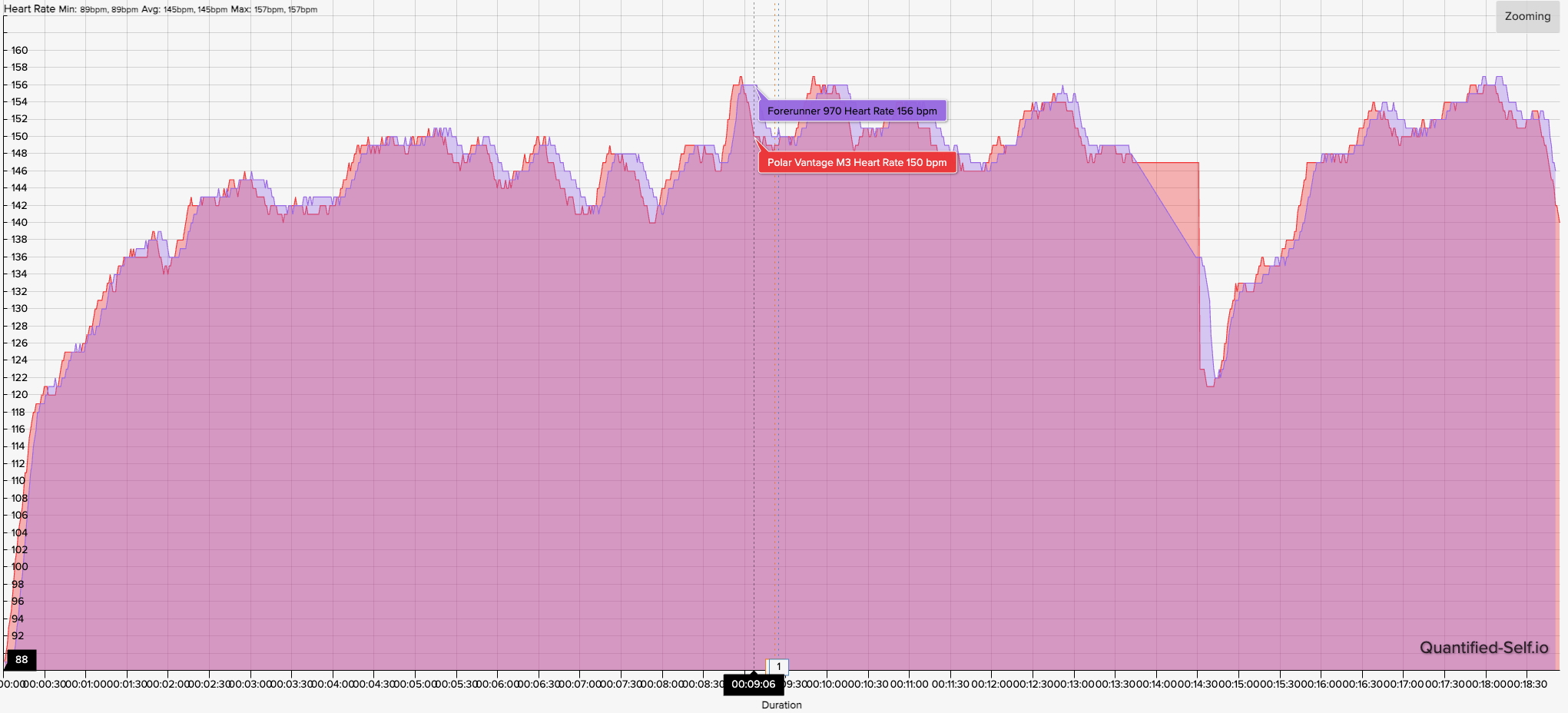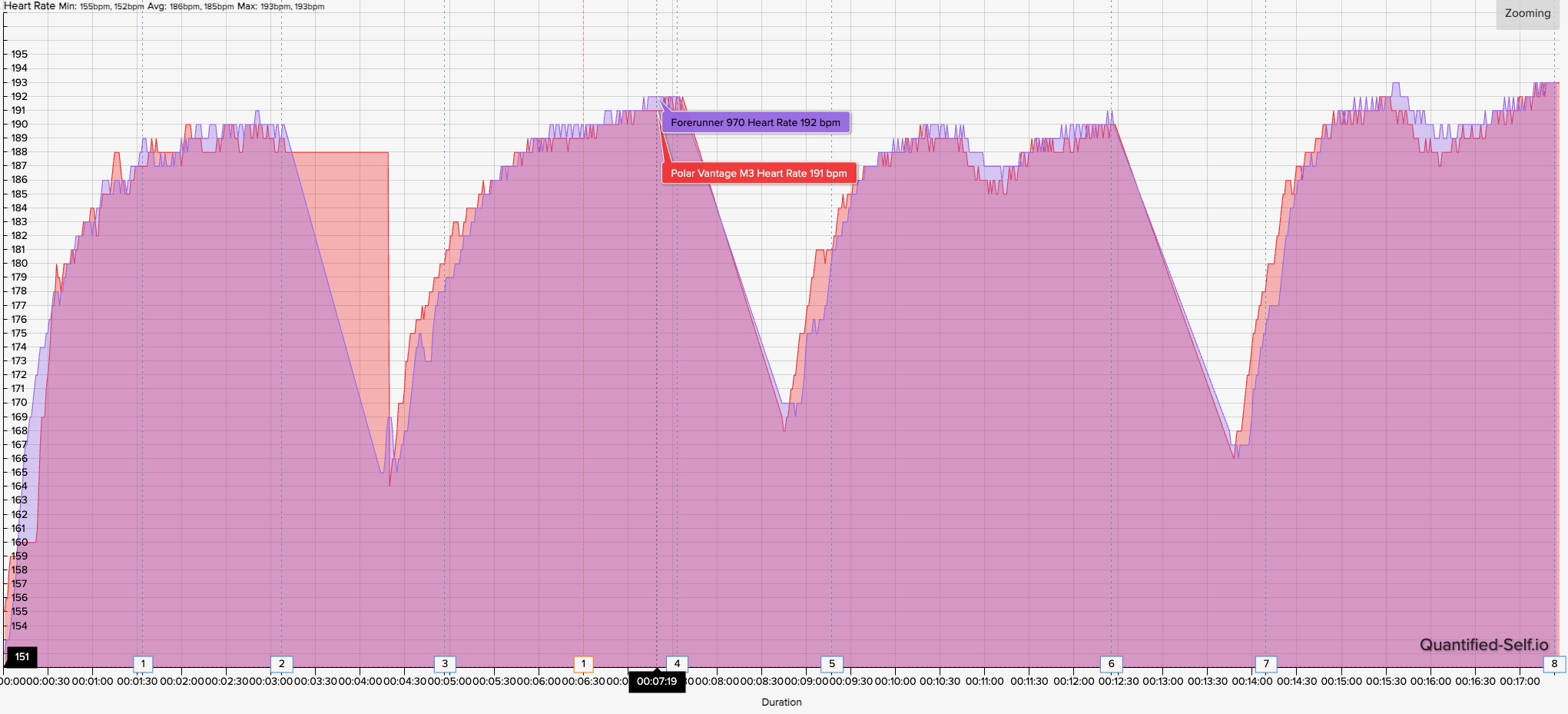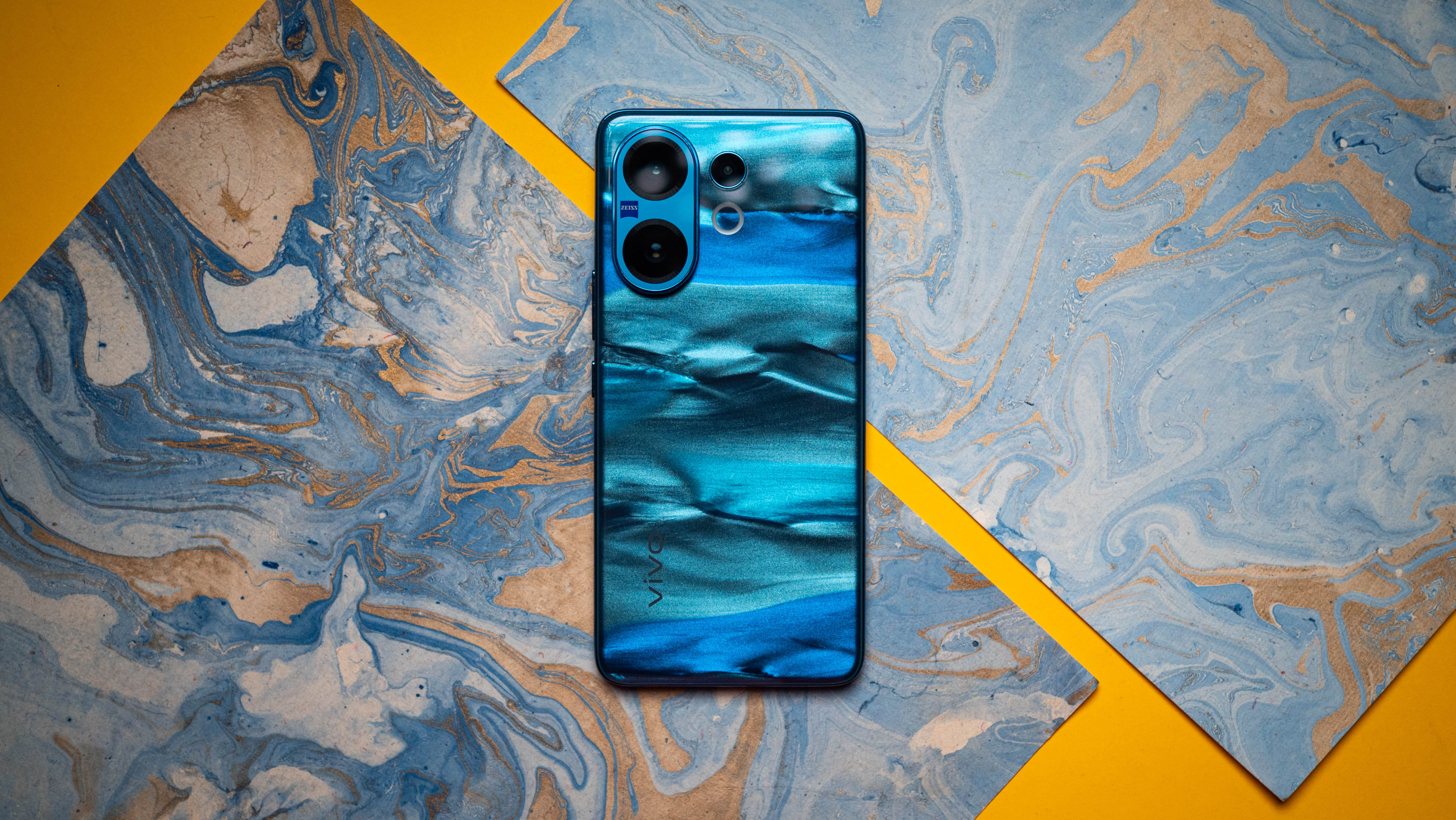This flagship Garmin fitness watch is shockingly accurate
I spent a month with Garmin's flagship running watch to judge whether the Forerunner 970's accuracy and new features live up to the price.
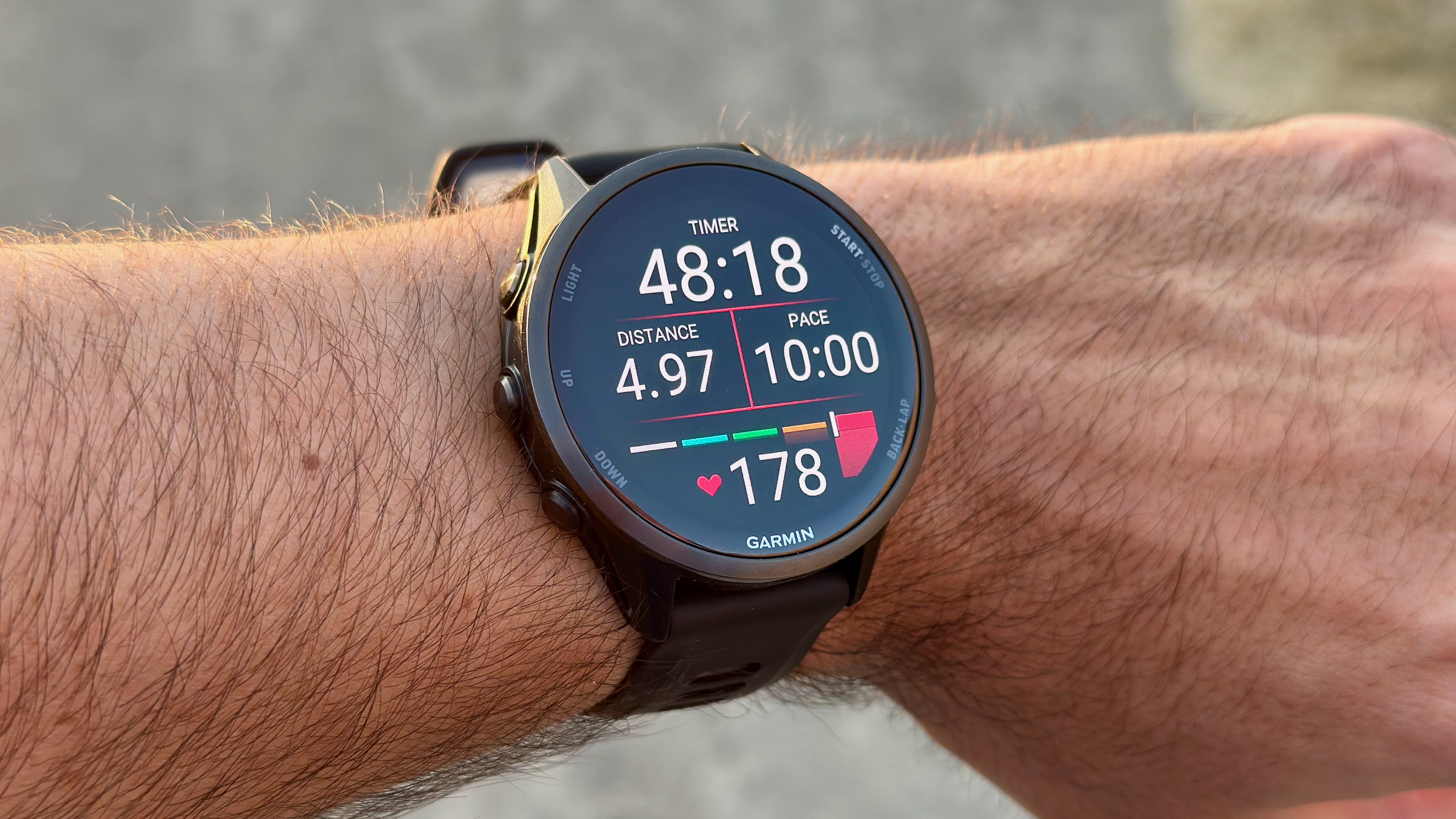
The Garmin Forerunner 970 is the running watch you buy when you don't want any compromises. Mostly that comes down to new features like running tolerance, impact load, and projected race time, along with all the training load tools you know and love. But you're also paying $750 for the best possible accuracy.
So, how accurate is the Garmin Forerunner 970 for GPS tracking, heart rate, step count, and supporting data like training load? I put its Elevate v5 HR sensor, dual-band GPS, and other sensors to the test across weeks of activities, comparing its results against satellite maps, chest and arm HR straps, and my usual step-counting app.
The end result? The Forerunner 970 is shockingly accurate. It gives you reliable health and fitness data from workouts, then spits out data from its algorithm that predicts your cardiovascular and biomechanical fatigue with surprising accuracy.
It sucks that the Forerunner 970 price tag is so high, but Garmin makes a valiant effort at justifying it.
Garmin Forerunner 970: Heart rate accuracy
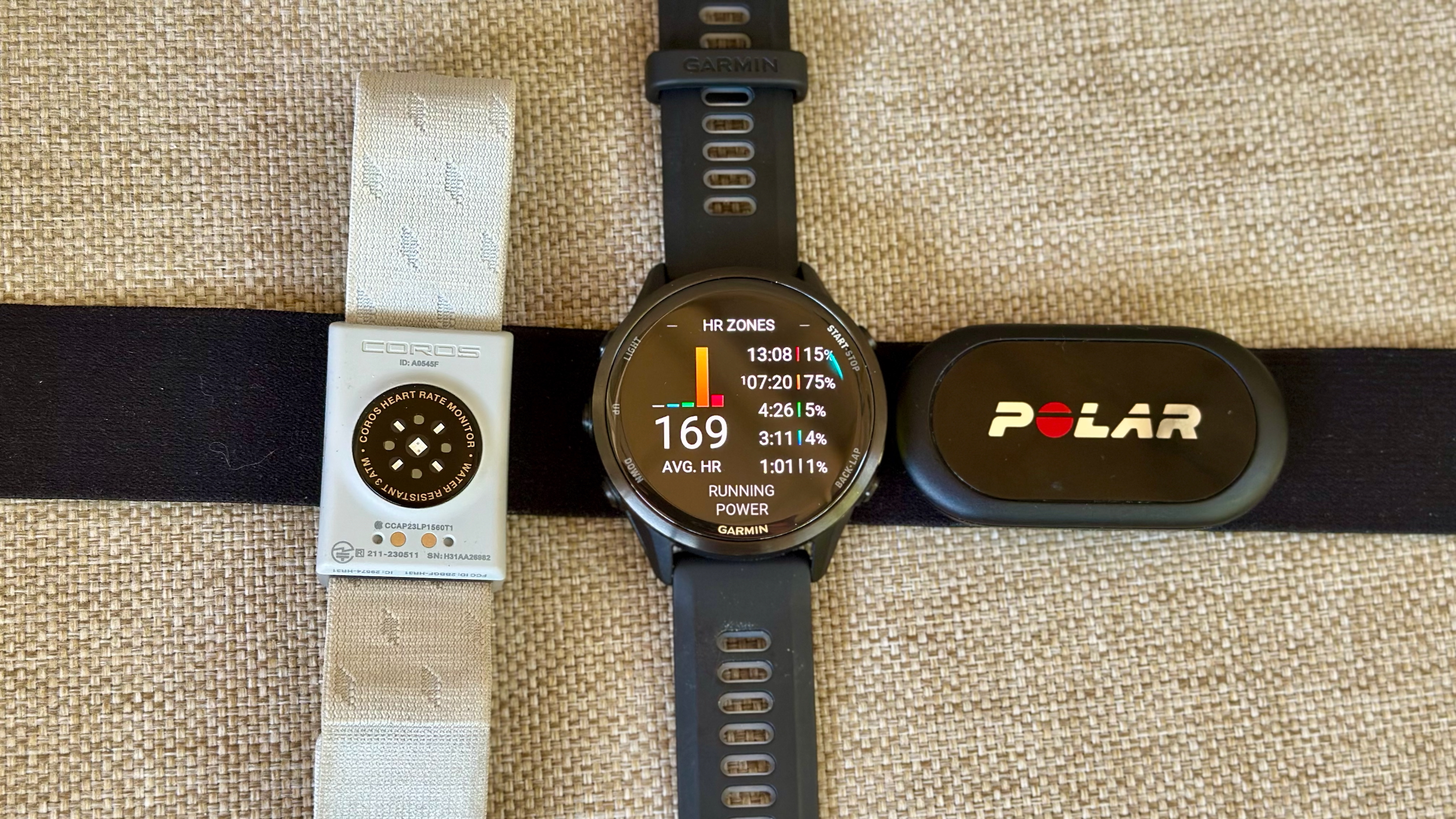
Across several runs, I used my Polar H10 chest strap and COROS HRM armband as control groups against the Forerunner 970. Optical armbands are more consistent and responsive than wrist-based optical sensors in my experience, a good comparison point. Chest straps are the gold standard, but smartwatches always trail behind them; your best hope is for the results to be close.
First, I used the Forerunner 970 and Polar H10 on a short jog to a track, then a hard track workout. For the first activity, both devices ended with a 145bpm average and 157bpm max, but I'd expect similar results for such a short run.
The chart shows that the Forerunner 970 responds rapidly when my heart rate climbs, but is about 10 seconds slower to recognize falling heart rates than the chest strap.
Get the latest news from Android Central, your trusted companion in the world of Android
(Side note: Polar tracks HR when an activity is paused, but the exported graph shows a flat line, weirdly. Just ignore them; they don't affect the results.)
The real tough test comes during anaerobic workouts; most fitness watches I've tested fall well short of my actual HR, only coming close to the chest strap on average because they measure inaccurately high HRs during cooldowns. But the Forerunner 970 did even better than I'd hoped.
As you can see, the Forerunner 970 was almost always within 1–2 bpm of the chest strap, only struggling a bit to keep up during the rapid HR gains after a pause.
For context, mainline watches like the Galaxy Watch Ultra or Pixel Watch 3 struggle mightily with anaerobic tracking, falling 5–10 bpm short for long stretches and skewing the data. Even fitness watches like the COROS PACE Pro and Polar Vantage M3 have problems with anaerobic data.
The Forerunner 970 did end 1 bpm short of the H10 strap for HR average, but all that matters to me is that I can count on the Forerunner 970 to be accurate in the moment when I look at my wrist mid-sprint and see my heart rate. That's surprisingly rare!
Next, I ran with my Garmin Forerunner 970 and COROS PACE Pro synced to my COROS HRM strap across a ten-mile run. Interestingly, the 970 showed my minimum, average, and maximum heart rate as 1 bpm higher than COROS's data.
These graphs are pretty well synced; Garmin just detected that I was working slightly harder than COROS. The gap is so small that it wouldn't affect your training load data.
Ultimately, I'd say the Forerunner 970's Elevate v5 sensor shows a slight tendency to overestimate my heart rate by about 1 bpm, but otherwise is as dependable as I'd hope for in this price range. I don't feel the need to wear an external HRM with the 970 for the best results, something I can't usually say with most fitness watches.
Garmin Forerunner 970: GPS accuracy
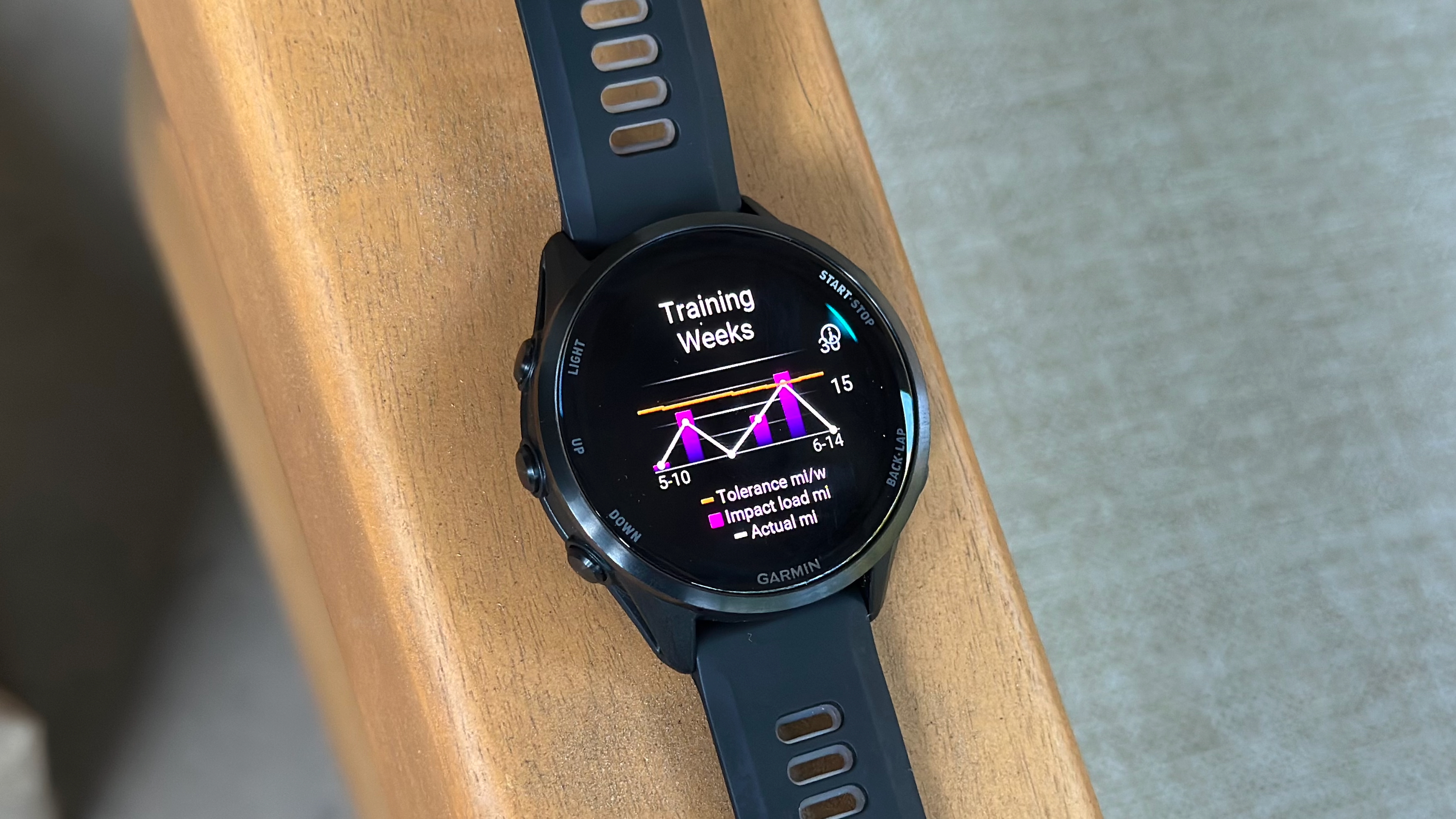
Garmin watches with dual-band GPS almost always perform seamlessly in my tests. Since I knew the Forerunner 970 would match its siblings, I focused instead on testing whether its default SatIQ mode — which sticks to GPS only until it needs the other satellites to save battery — was adequate, or if runners should stick to dual-band GPS only.
For my ten-mile run, I used "Best accuracy" on both my Forerunner 970 and COROS PACE Pro; both ended at 10.01 miles and showed a minuscule gap of six feet at the end. It's awesome to see both brands be in such close lockstep over a long distance.

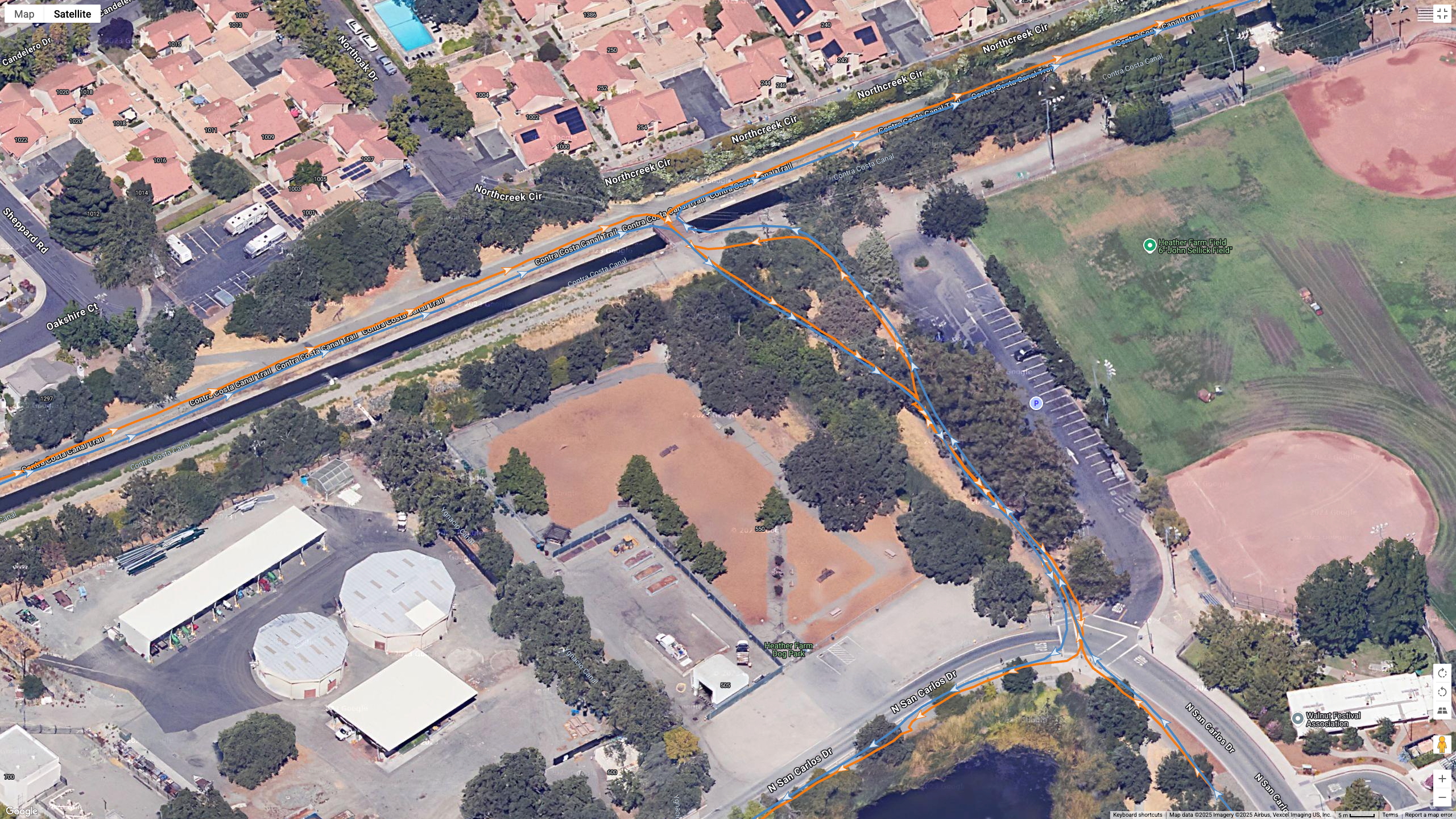
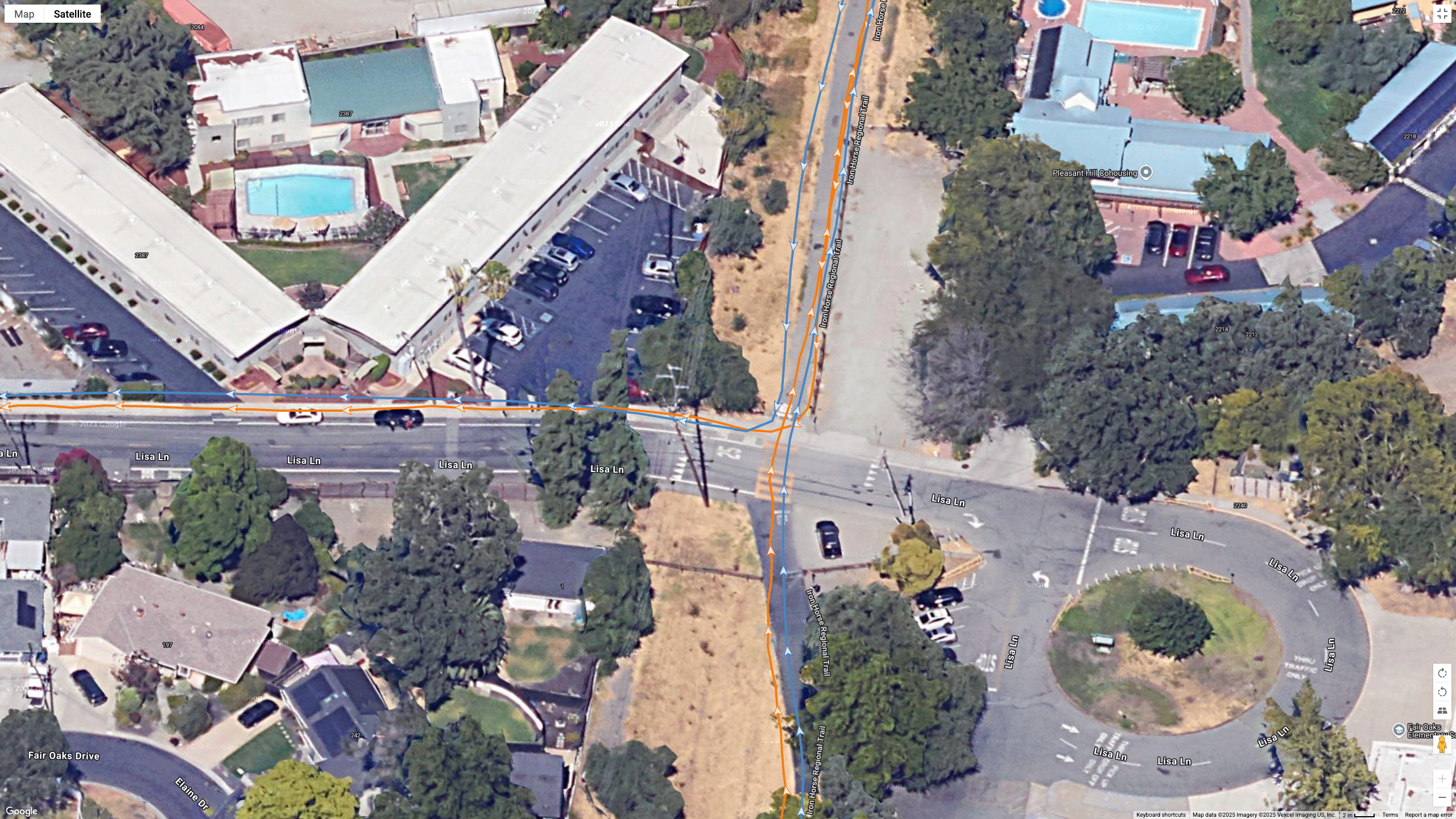


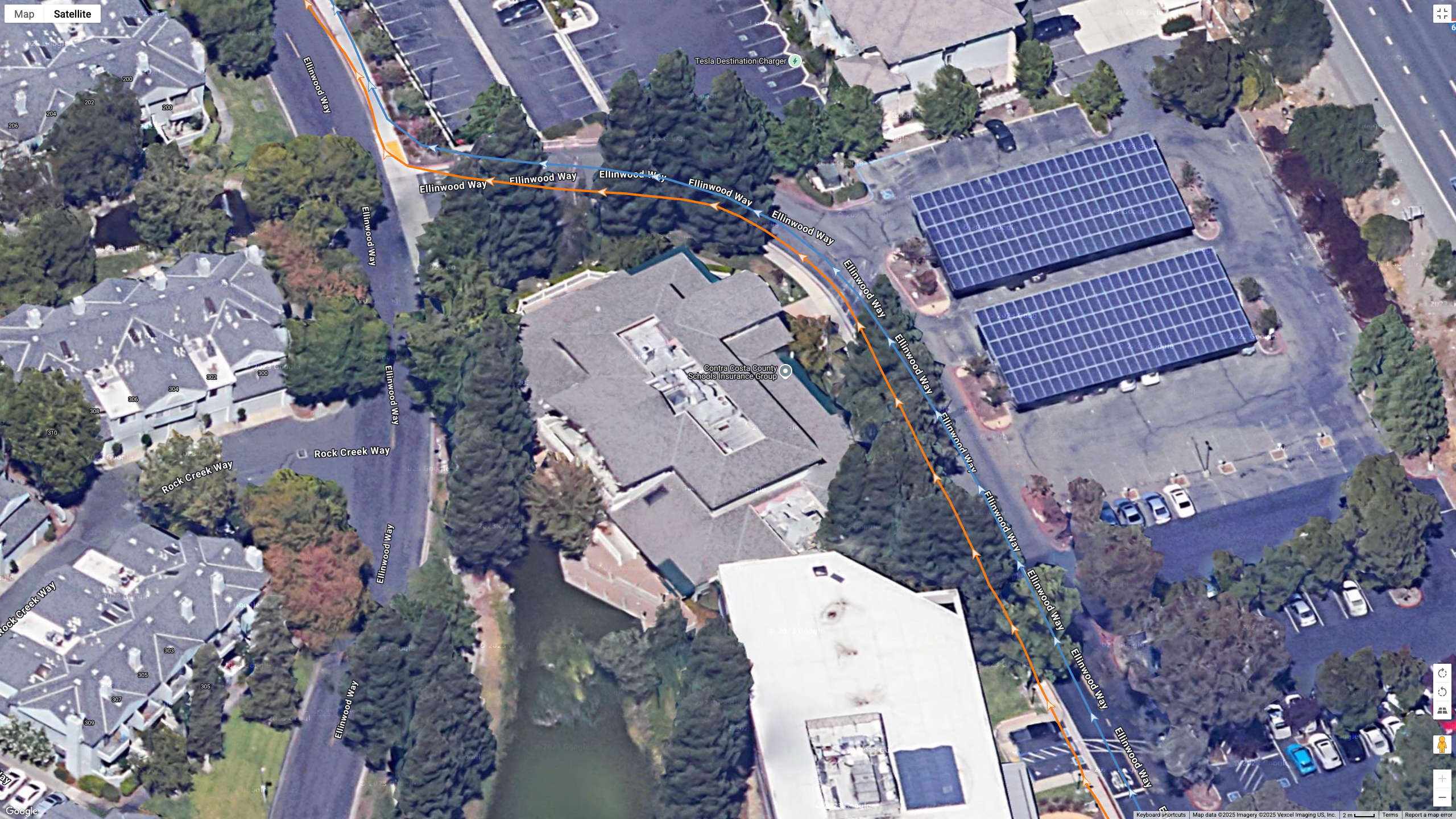
The end result was ten miles of boringly accurate GPS data, with Garmin (orange) generally closer to my real-life position and COROS (blue) slightly adrift but always parallel. I realized after the run that I have the PACE Pro set to my left wrist but wore it on my right, which may have skewed the tracked line a bit.
Checking specific points like crosswalks, I could clearly see moments where I changed my path to press the walk button, or (in the first screenshot above) dithered about in a semi-circle while waiting for the signal. My path stayed consistent under foliage, too.


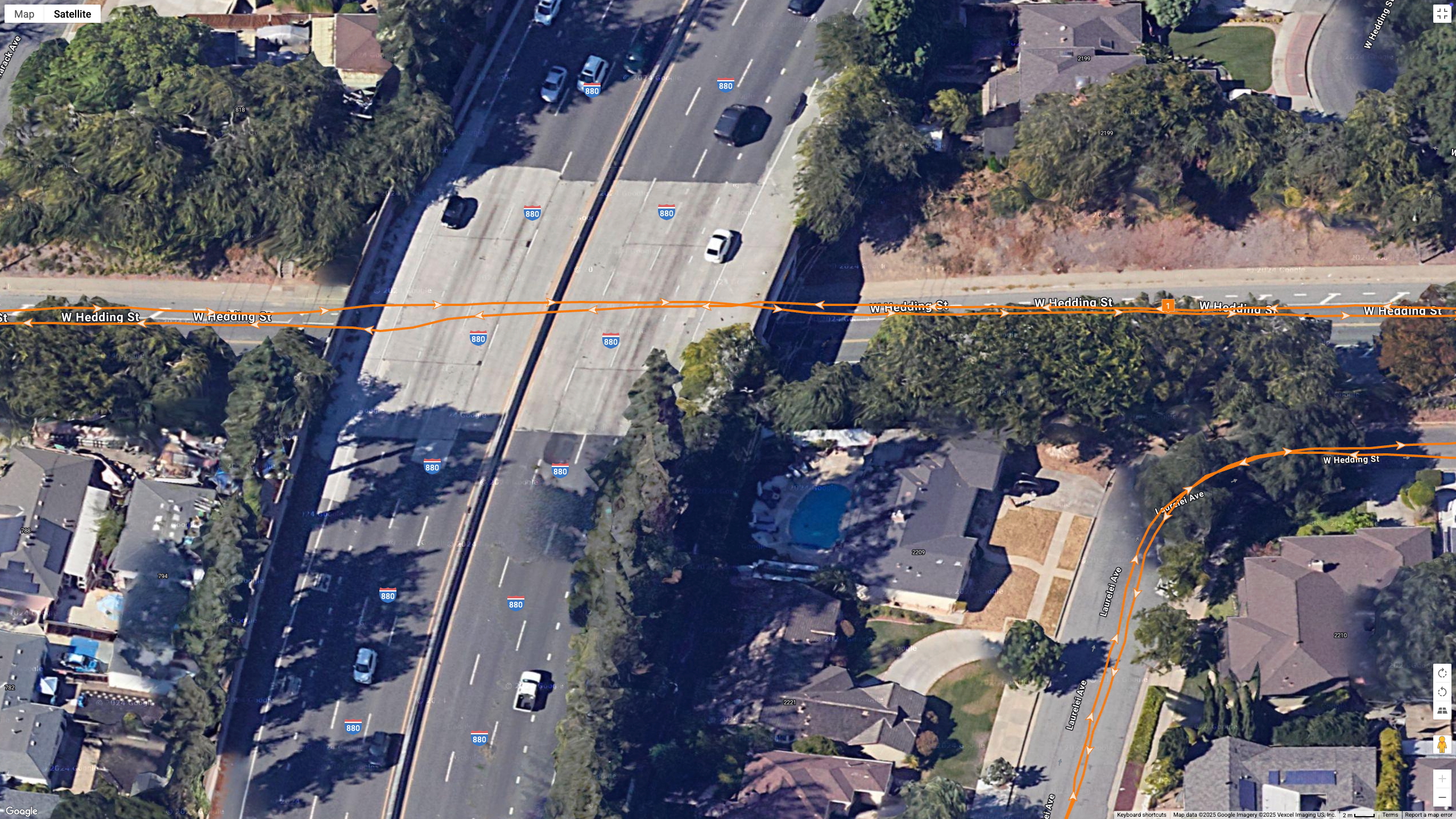
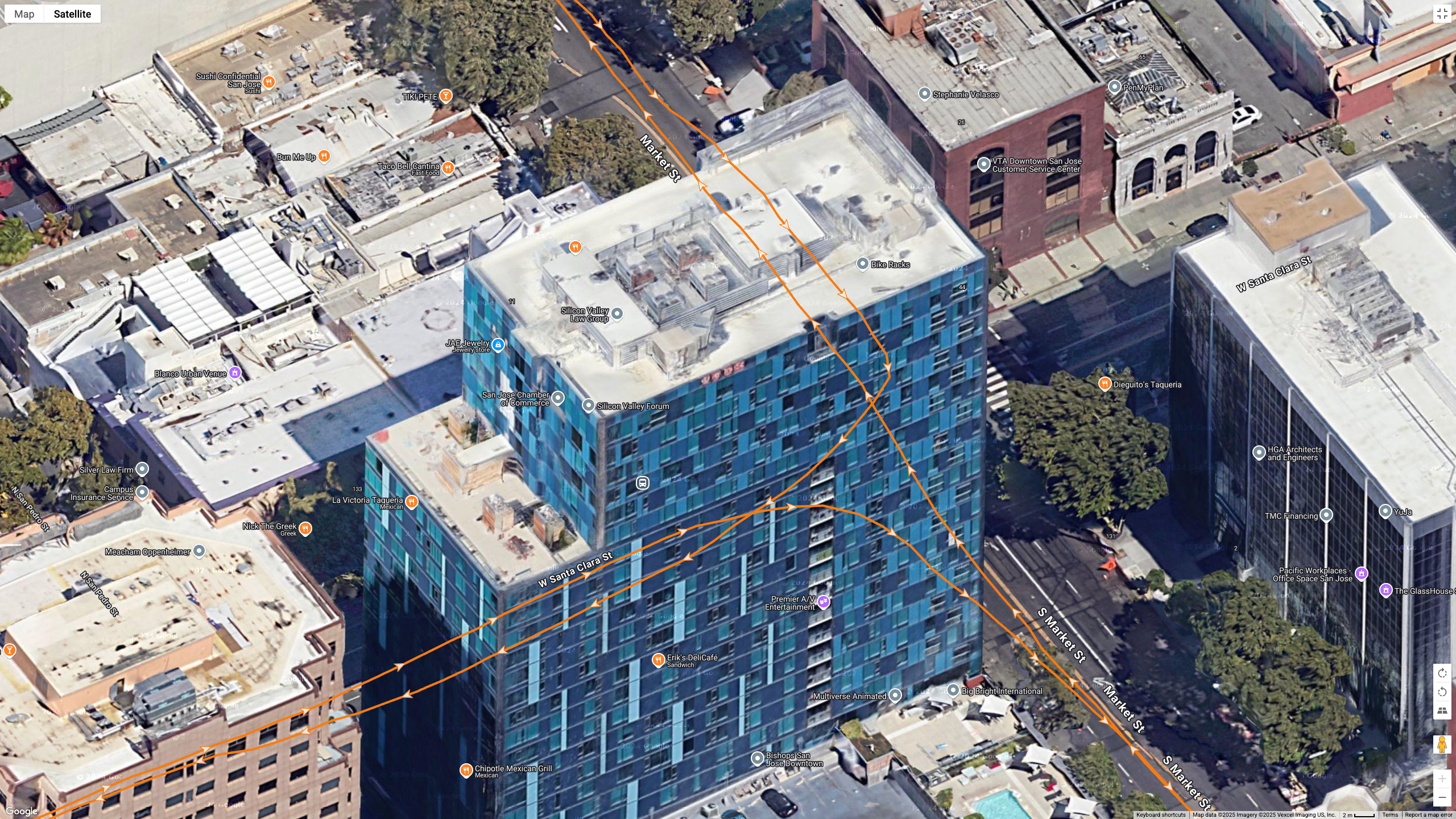
When I ran a half-marathon wearing Meta Ray-Bans earlier this month, I was also wearing the Forerunner 970 in SatIQ mode. I didn't wear another watch because wearing multiple watches mid-race is a distraction, but it was an opportunity to see how the 970 handled tall buildings or underpasses.
As the screenshots above show, the watch did struggle with underpasses a bit in SatIQ mode, guessing at my direction and correcting whenever it re-aquired my signal, and even showing me running backward at one point. But tall buildings didn't seem to be an issue, with me never straying further than the sidewalk.
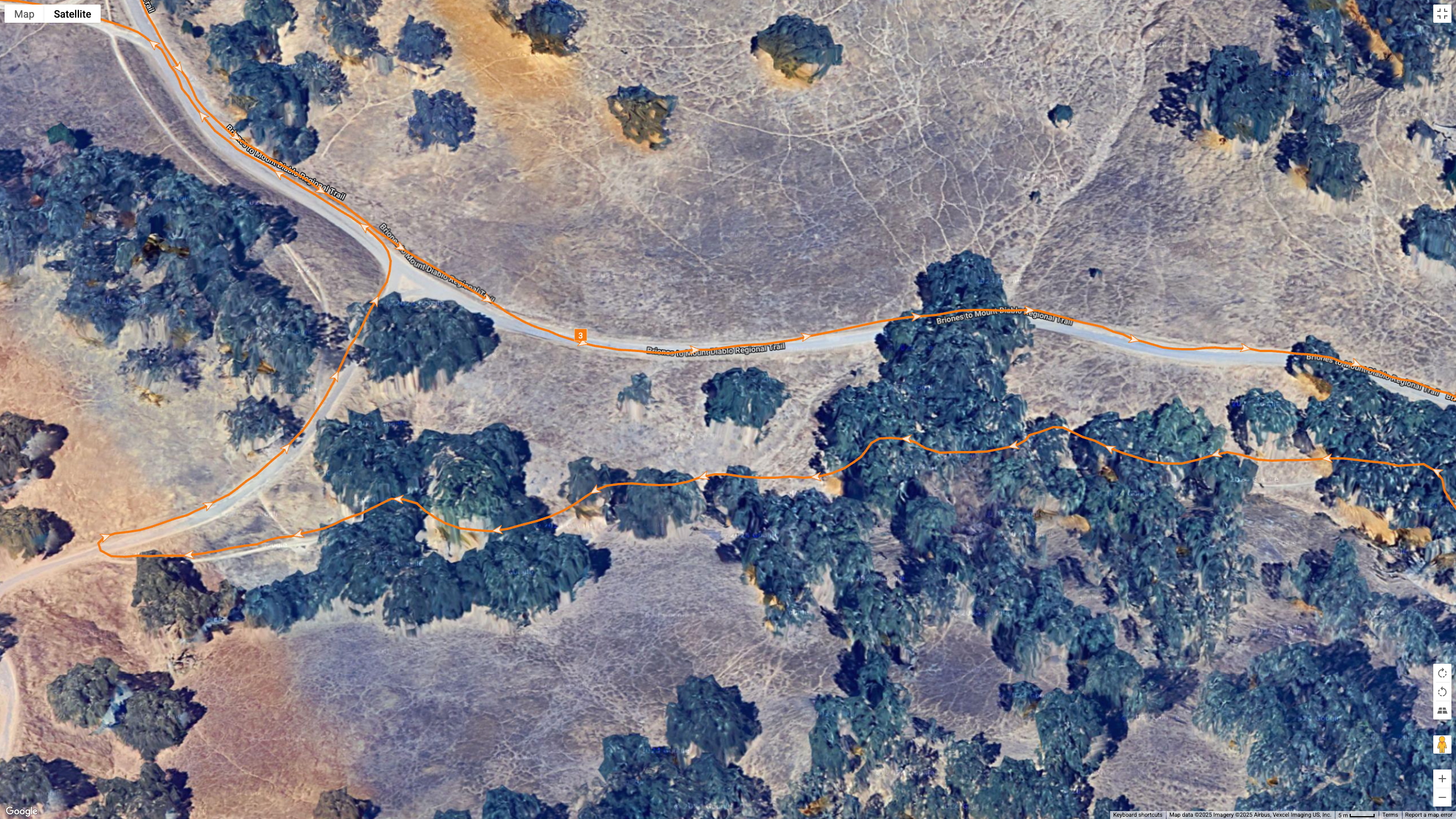
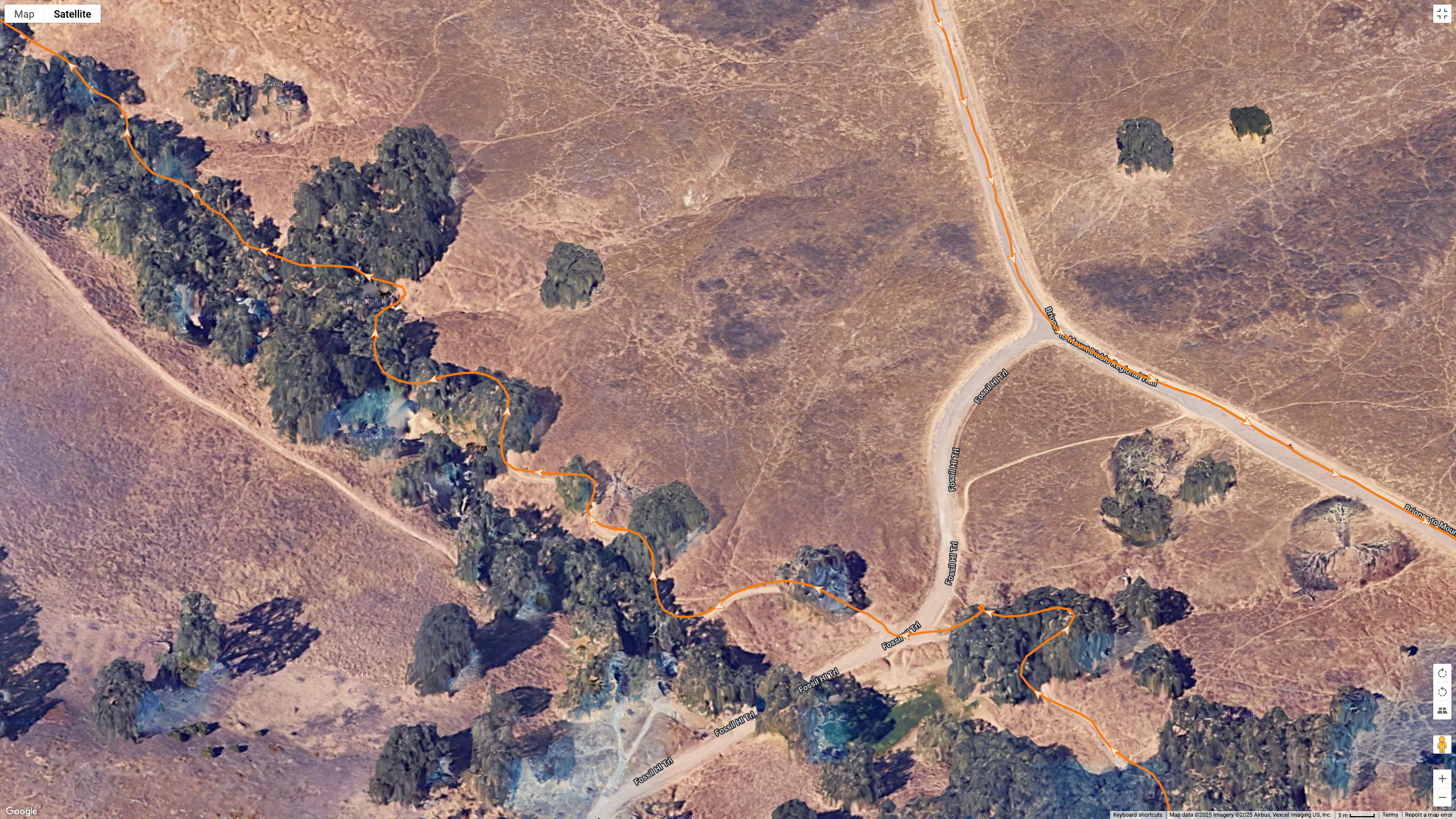
On another SatIQ-tracked run on a windy trail, the Forerunner 970 stayed on course despite signal blockage from trees and the tall hill nearby. Aside from one or two tiny blips, I had no complaints about the accuracy. It made me happy to know that I can count on this mode, even if I usually prefer dual-band GPS.
Again, I was very happy with the results here. Cheaper dual-band Garmin watches like the Instinct 3 or Forerunner 265 might also suffice, but the Forerunner 970 lives up to the quality I expected, and better than other brands offering multi-band GPS.
Garmin Forerunner 970: Step count accuracy
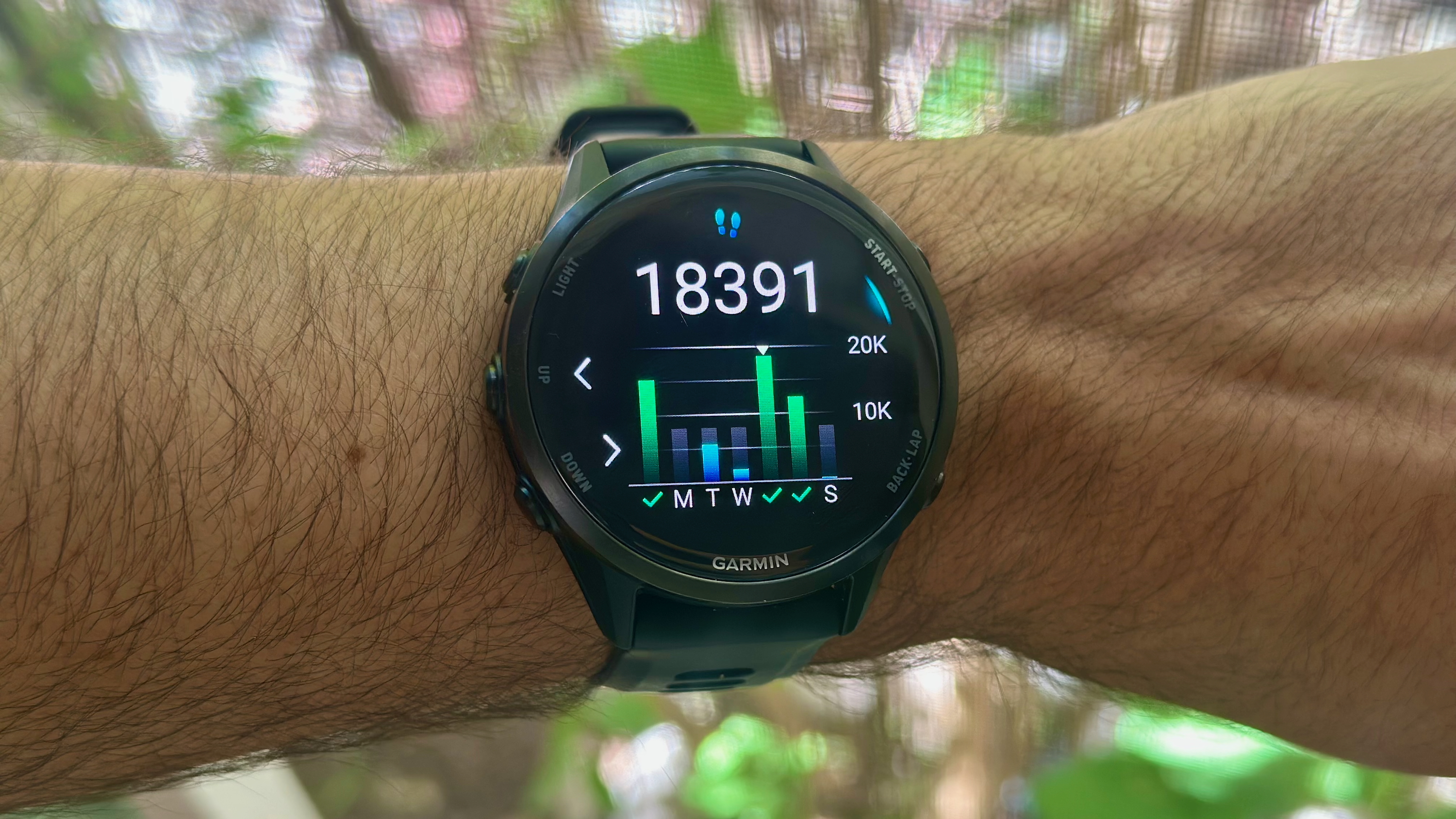
Past Garmin watches have done pretty well for step count accuracy. When I wore six watches for 6,000 steps, the Forerunner 265 did the best, only 15 steps off. Last year, the Forerunner 965 was 17 steps off after 5,000 steps, but some smart rings did slightly better. The Garmin Fenix 8 was 50 steps off after 10,000 steps, and my colleague Derrek found that the Forerunner 570 was 40 steps off in his own test.
These results are all pretty solid, and Garmin watches are great at avoiding false-positive steps during the day. However, the pricier models didn't yield better results, and Garmin has never mentioned upgrading its accelerometers or gyroscopes. I assumed the Forerunner 970 step count accuracy would be comparable.
I started the test with 1,735 steps and walked for 5,000 steps, holding my phone in my right hand to track them with a counting app while my left arm swung freely. At 5,000 steps, I took another four steps to sit down on a bench and checked the total: 6,739 steps. Yep, 5,004 exactly.
I felt simultaneously stunned at the accuracy and annoyed that people probably wouldn't believe the result. So I stood back up and walked another 5,000 steps as twilight fell into evening to check if it was a fluke.
I checked my total: 11,740 steps, aka another 5,001. That makes the Forerunner 970 off by one step after 10,000.
I can't guarantee you'll get comparably exact results; it may depend on your gait, or if you hold a phone or trekking pole in your watch-side hand. But personally, I'm thrilled knowing that when I walk 10,000 steps a day, the Forerunner 970 will track every step without fail.
Garmin Forerunner 970: Overall accuracy
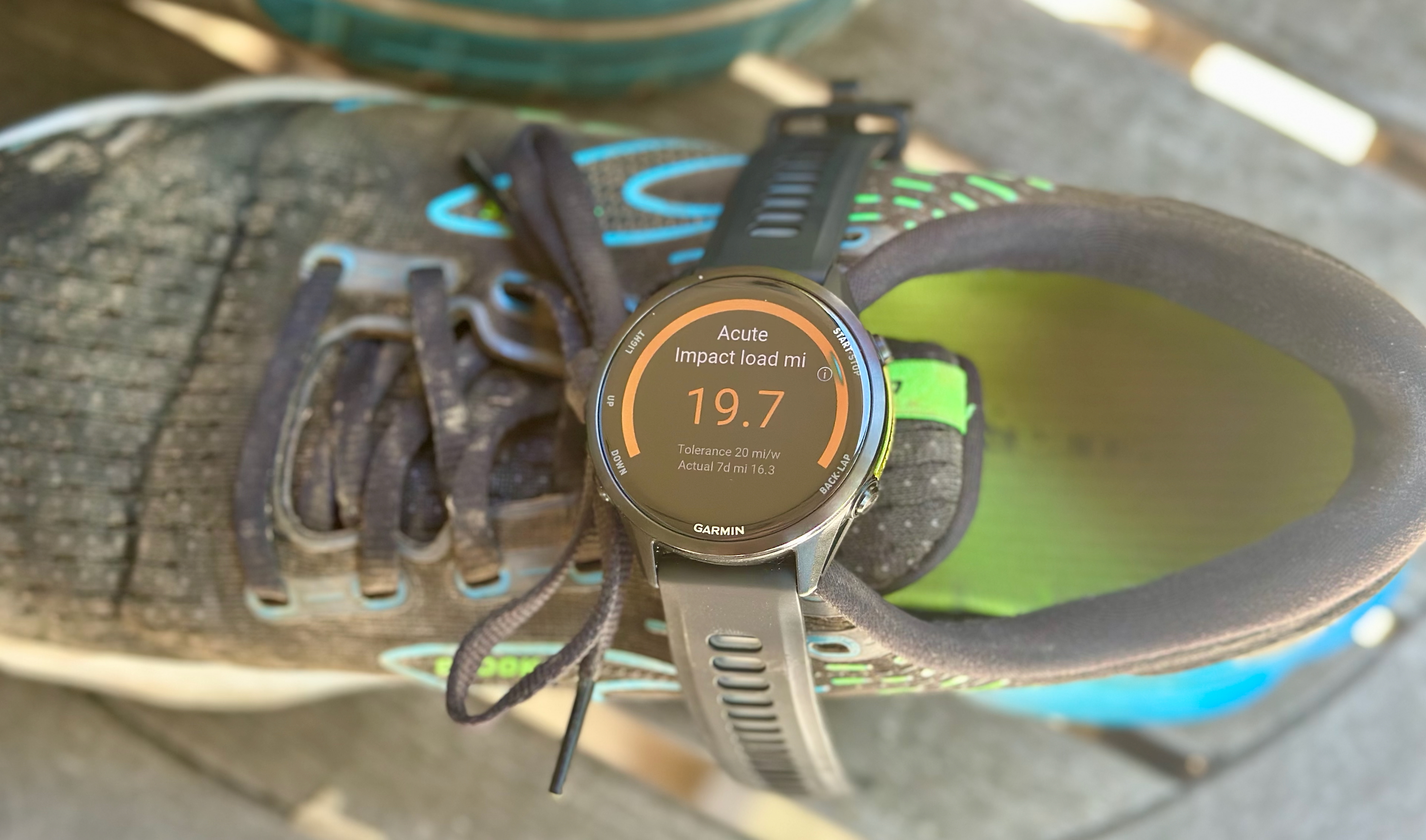
Smartwatch accuracy goes well beyond the raw data. It's also about whether the Garmin Forerunner 970's training data is both accurate and helpful.
At the core of Garmin's Firstbeat Analytics data is your VO2 Max, lactate threshold, training load focus, and recovery time. These focus on cardiovascular data, and while I can't know if my VO2 Max is accurate without going to a lab, its rises and falls do correspond to real-life changes in fitness — but slowly.
I personally prefer the Endurance Score, which shows my fitness trends across the past few months that will translate into actual speed and longevity during runs, with more exact data than the VO2 Max graph shows. And it's only available on high-end models like the 970 and Fenix 8.
Generally speaking, the 970's recovery time estimates have been quite accurate at judging short-term exhaustion and when I'll recover. And I absolutely love Garmin's training load focus for helping me judge when to do low aerobic or anaerobic runs; the only downside is how Garmin doesn't split a run's training effect into all three categories, tending to lump most of it into one slot.
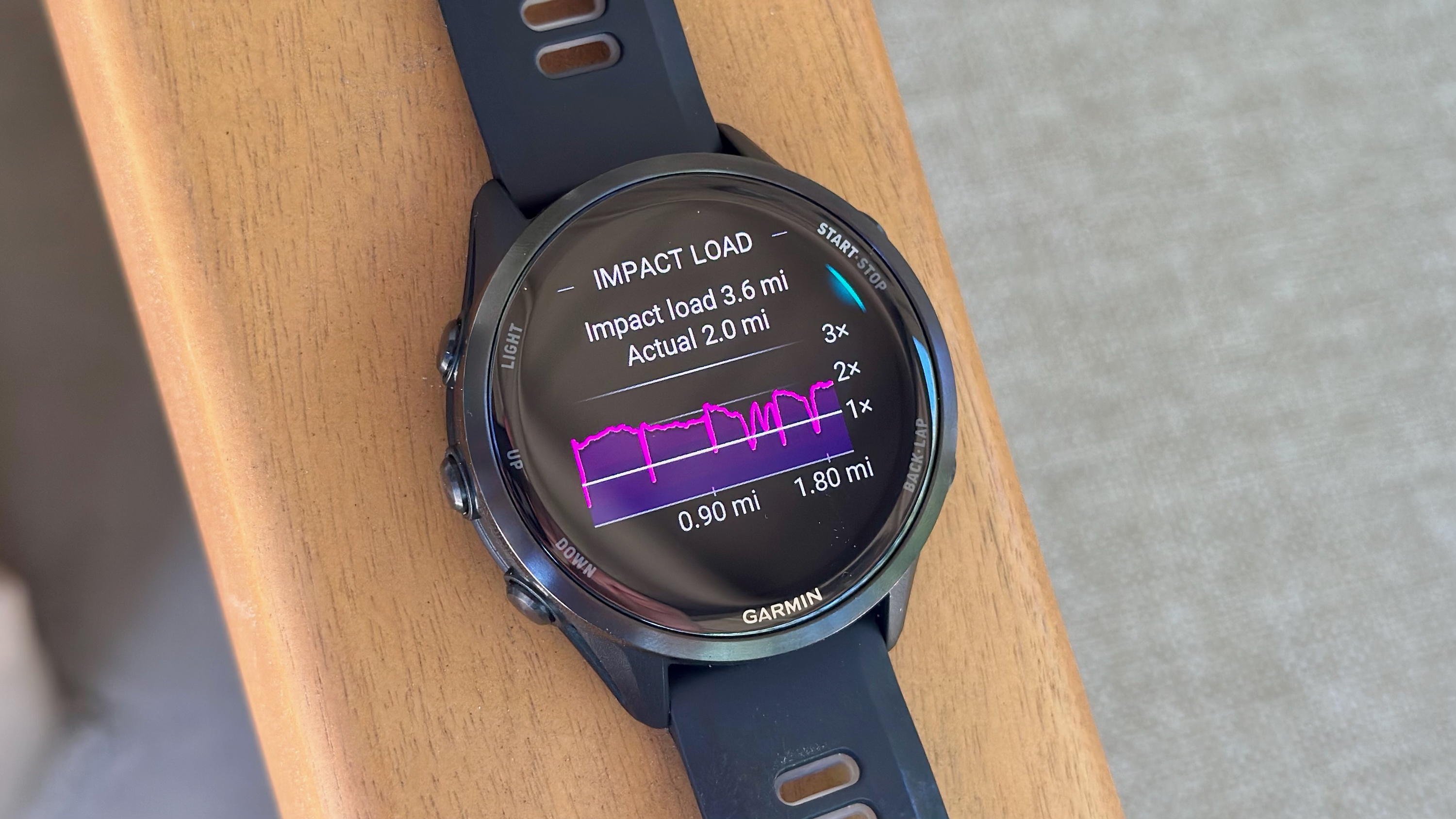
The 970 builds on the cardiovascular foundation of past watches with running tolerance and impact load. Your body's biomechanical strain on muscles and joints differs from your cardiovascular fatigue, but past models couldn't track that.
How well do they work? I already wrote earlier this month about how useful and accurate running tolerance is! The Forerunner 970 correctly judges when long runs put too much impact load on my body past its tolerance. I ignored the data the first time and ended up hurting myself; now I'm back on the cusp of my body's limit, and I'm being more cautious.
After every run, it calculates the impact load based on factors like your cadence, the elevation change, and intensity. I've found that Garmin's estimate has always correctly judged the relative impact load — like recognizing that a blistering two-mile track workout might cause as much strain as a normal four-mile run — across this past month of training.

The only new feature that I find a little suspect is the race predictor tool (shown above) that guesses how fast I'll be able to run a race weeks from now at my current training pace. Garmin's race predictions have always been optimistic, but that half-marathon time feels like wishful thinking for me at my current level.
Otherwise, the Garmin Forerunner 970 gives me a comprehensive and accurate measure of my overall fitness level and the specific impact of each run. It will overwhelm someone who isn't prepared to dive into menus to find all of this data, but Garmin veterans will love the 970 simply for training load focus, weekly mileage tolerance, and the brighter display.

Michael is Android Central's resident expert on wearables and fitness. Before joining Android Central, he freelanced for years at Techradar, Wareable, Windows Central, and Digital Trends. Channeling his love of running, he established himself as an expert on fitness watches, testing and reviewing models from Garmin, Fitbit, Samsung, Apple, COROS, Polar, Amazfit, Suunto, and more.
You must confirm your public display name before commenting
Please logout and then login again, you will then be prompted to enter your display name.
